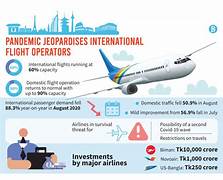The Indian aviation sector has been facing turbulent times in recent years. On 02-May-2023, Go First Airlines (Founded as GoAir) voluntarily filed for Bankruptcy. On the date of writing this article. the airline company has canceled all flights till 12-May-2023. I’ll try to explain why in a buoyant and growing economy like India, Indian Airline companies are not able to survive.
With the rise of an emerging Indian middle class wanting to travel, many airlines have ordered billions of dollars worth of planes. Following is the likely composition of new planes ordered by Air India to Boeing and Airbus in February 2023.
| Description | Unit | QTY | Remark |
| Airbus A350s | Nos. | 40 | Widebody |
| Airbus A320/321 Neos | Nos. | 210 | Single Aisle |
| Boeing 787 | Nos. | 20 | Widebody |
| Boeing 777-9S | Nos. | 10 | Widebody |
| Boeing 737 MAX | Nos. | 190 | Single Aisle |
| Total | Nos. | 470 | – |
The recent ordering has created a cauldron of competition in what is now the world’s most populous nation.
However, this has not translated into profits, and the pandemic has only worsened the situation.
Let’s try to understand why Indian Airlines are struggling to stay afloat.
The Indian aviation sector has faced various challenges that have made it difficult for many airlines to stay financially stable and profitable. Some of the key factors contributing to the struggles of the Indian aviation sector include:
- Intense Competition: The Indian aviation market is highly competitive with several airlines vying for market share. This competition often leads to price wars, making it challenging for airlines to maintain profitable pricing strategies.
- Price Sensitivity: Indian consumers are known for their price sensitivity. They are often looking for the lowest fares, which puts pressure on airlines to reduce prices to remain competitive. This can result in thin profit margins.
- High Operating Costs: Operating costs for airlines in India, including fuel, airport charges, and maintenance, are relatively high. Fluctuations in fuel prices can significantly impact the bottom line of airlines.
- Taxation: Aviation fuel in India is subject to high taxes, making it more expensive for airlines. This affects their operational costs and profitability.
- Infrastructure Challenges: Many Indian airports face congestion and infrastructure limitations. This can lead to delays and operational inefficiencies, impacting the overall passenger experience.
- Regulatory Hurdles: The Indian aviation sector has faced regulatory challenges, including restrictions on international operations and complex rules regarding airline ownership and foreign investment.
- Economic Factors: Economic fluctuations and economic downturns can impact passenger demand for air travel. During economic downturns or crises, people tend to cut back on discretionary spending, including travel.
- Pandemic Impact: The COVID-19 pandemic had a severe impact on the aviation industry worldwide, including in India. Lockdowns, travel restrictions, and a significant drop in passenger demand led to revenue losses and operational challenges.
- Rising Debt: Many Indian airlines have struggled with high levels of debt, which can be a significant financial burden. Servicing this debt can limit the financial flexibility of airlines.
- Lack of Infrastructure Investment: While there have been some improvements, India’s aviation infrastructure still faces challenges. Modernizing and expanding airports, air traffic control systems, and other facilities is crucial for the sector’s growth.
- Fierce Airline Failures: Over the years, several Indian airlines have faced financial difficulties and even ceased operations. This has created uncertainty in the industry and impacted passenger trust.
- Cyclicality: The aviation industry is cyclical, with periods of growth followed by downturns. Airlines need to be prepared for these cycles and have robust strategies in place to weather economic downturns.
Despite these challenges, the Indian aviation sector has shown resilience and potential for growth. Some airlines have adapted by diversifying their offerings, improving operational efficiency, and exploring new routes and markets. Government initiatives to promote regional connectivity and tourism can also play a role in reviving the sector. However, addressing the underlying challenges will be essential for the long-term sustainability and growth of the Indian aviation industry.



